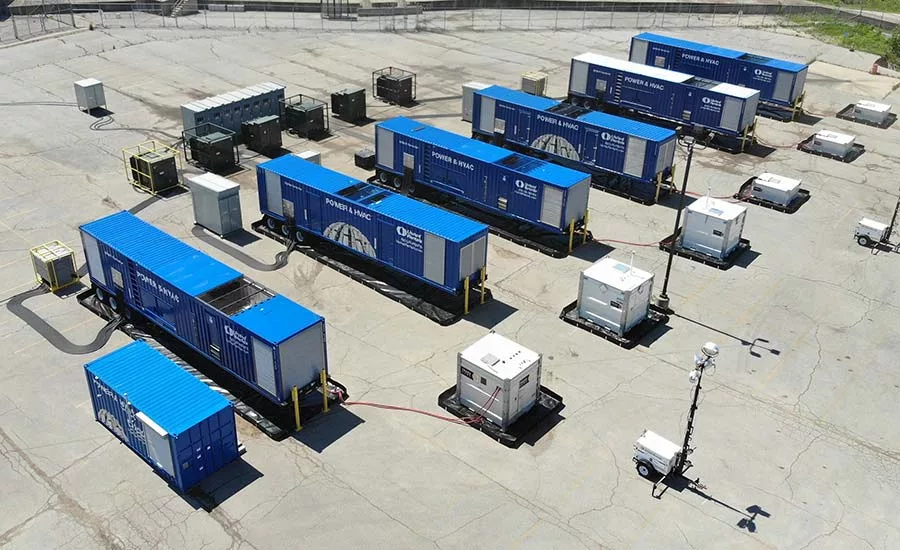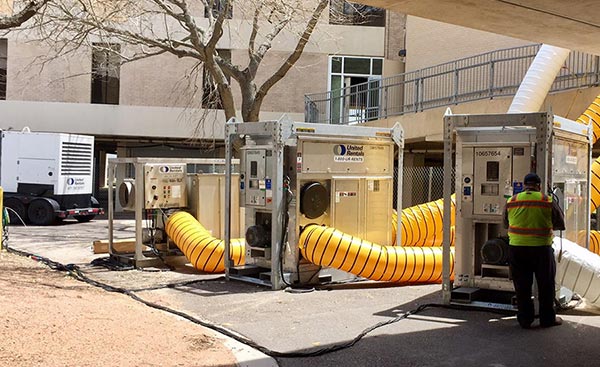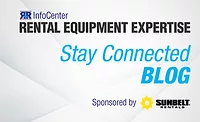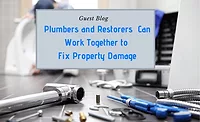How Property Restoration Companies Can Master the Buy Versus Rent Equation
4 Best Practices

Photo credit: United Rentals.
Successful restoration companies typically make sizeable profits on owned equipment because they understand exactly what equipment to buy and what equipment to rent. Companies newer to the business who adopt these strategies can significantly increase revenue while reducing capital expenditures.
Even if you have the buy versus rent equation down pat, you may be missing out on other opportunities to protect your business and enrich the bottom line, such as pre-renting critical equipment before major weather events and working with a reliable one-stop equipment vendor to ensure the continuity of your operations when disasters strike.
To boost productivity and profitability, embrace these best practices.
What Equipment to Own
Purchase the inexpensive, portable equipment you rely on regularly, such as air movers, fans, air scrubbers and LGR dehumidifiers. These items are cost effective to transport by truck and don’t require a lot of maintenance. When you charge your customers a scheduled rate for this equipment, it ends up paying for itself many times over.
The bottom line: Spend your capital on the equipment that’s core to your business and makes you the most profit.
What Equipment to Rent
Rent the large equipment you use less often (and charge your customers a time and materials rate with the standard markup). This strategy does more than save you a capital expenditure; it also saves you sales taxes, maintenance costs, transport and storage costs and depreciation.
Why buy a $250,000 excavator or a $10,000 light tower you might use three times a year when you can buy smaller equipment that can make you exponentially more profit? Other pieces of equipment companies are typically better off renting include heavy forklifts, skid steers and generators.
Also rent smaller items you don’t use often enough to justify owning, such as trash pumps. And of course, rent equipment when large projects exhaust your owned fleet.
The bottom line: Let a rental provider buy, transport, maintain and depreciate the big items you use, and bill for, less often.

What Equipment to Pre-Rent
When a major storm is forecasted, prepare by pre-renting certain pieces of equipment a week or more in advance. You don’t want to be the last restoration company in line to acquire essential items vendors may run out of. These include light towers, forklifts, generators, desiccant dehumidifiers and air conditioners, which you’ll need to not only stabilize the climate but also to mitigate mold growth.
If you can’t do a job because you’re missing a key piece of equipment — say you’re unable to set desiccant dehumidifiers or air conditioners because no forklifts are available — you may lose it to a competitor.
Equipment you pre-rent may occasionally go unused, but better safe than sorry. And by pre-renting (and keeping the equipment longer), you may get a better price.
The bottom line: Make sure to secure key pieces of equipment prior to a CAT event.
What to Look for in an Equipment Supplier
In the immediate aftermath of a hurricane, tornado, fire or flood, time is money. Consider a big-box store that loses $15,000 every hour it’s closed.
When disaster strikes, restoration companies need a construction equipment supplier who will not only answer the phone (including after hours, on weekends and on holidays) but also provide the required equipment as soon as possible and deliver it to your door.
After catastrophic events, when every supplier is running low on inventory, a company with an extensive network of branches and a large inventory of equipment across categories is more likely to have what you need. Establish a relationship with a first-class supplier and they will pull out all the stops to get equipment for you even when demand far exceeds supply.
To streamline operations and save multiple phone calls, partner with a company that can provide equipment beyond yellow iron and HVAC units. A one-stop supplier will also offer mobile containers, air-conditioned office trailers, porta potties (and the manpower to service them), temporary fencing, pumps and pump solutions, power distribution equipment and more.
The bottom line: Look for an equipment supplier who can supply it all and will bend over backwards to get you what you need, when you need it.
Restoration and remediation work doesn’t get done without equipment. Complete projects on time and make sure your budget goes further by mastering the buy versus rent equation, pre-renting critical equipment to outsmart your competitors and establishing a relationship with a one-stop equipment supplier that can act as a true partner.
Looking for a reprint of this article?
From high-res PDFs to custom plaques, order your copy today!








